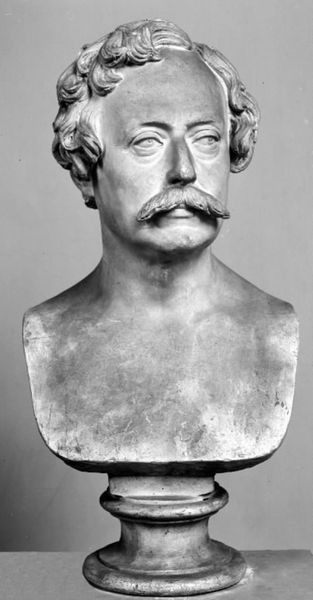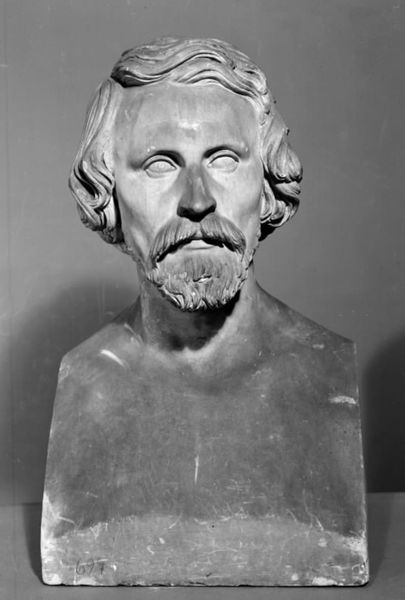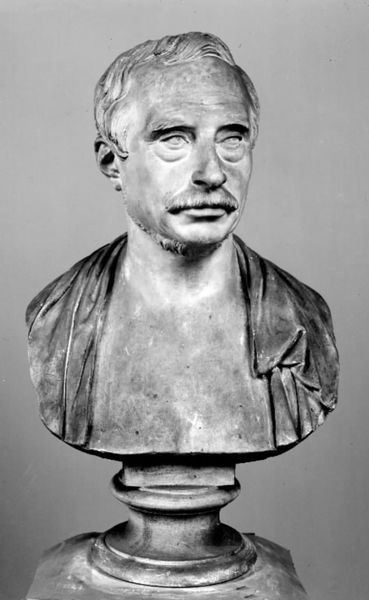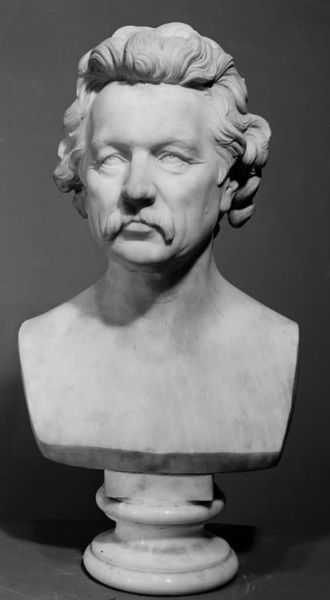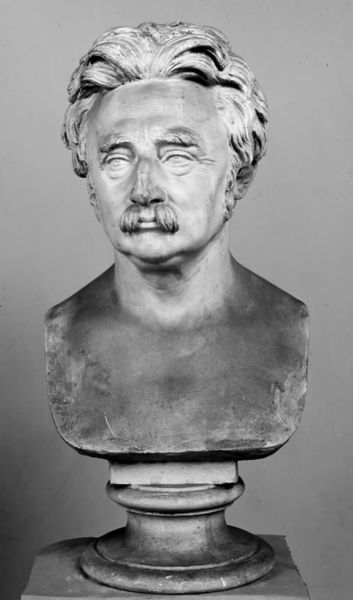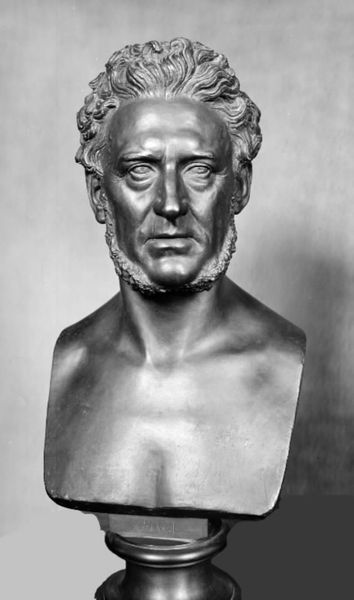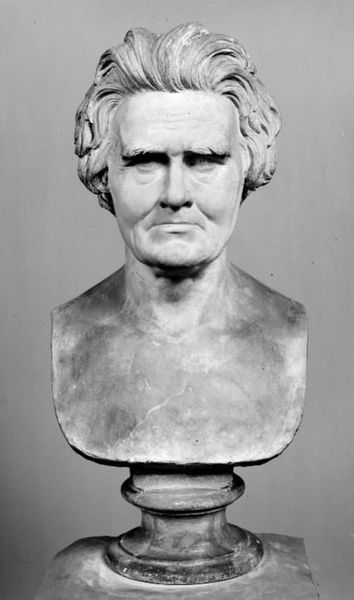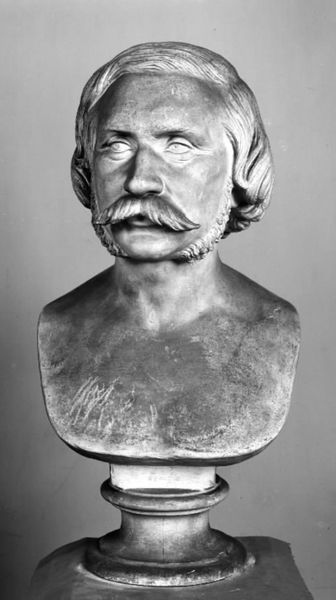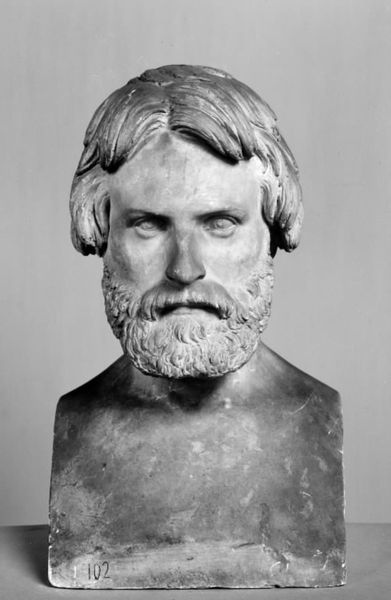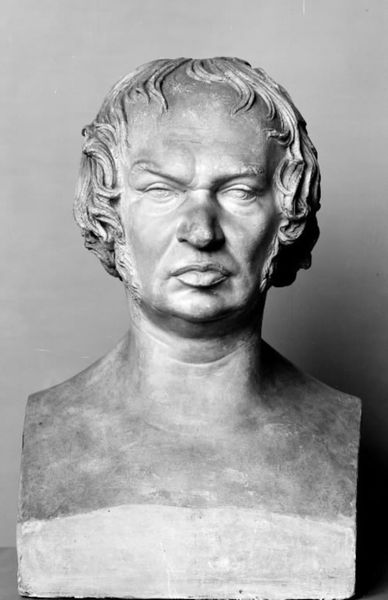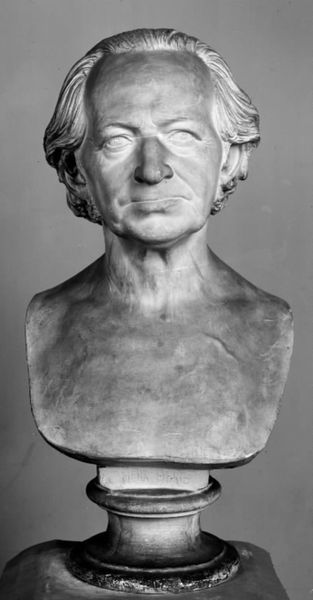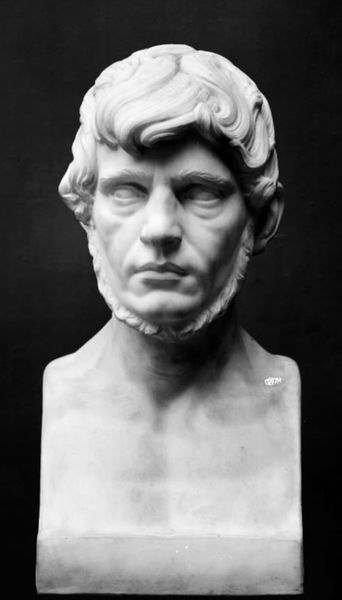
sculpture, marble
#
portrait
#
neoclacissism
#
portrait
#
sculpture
#
classical-realism
#
sculpture
#
marble
Dimensions: 71.4 cm (height) (Netto)
Editor: Here we have a marble sculpture titled "Oberst A.F. Tscherning," created around 1860 by J.A. Jerichau. The face is remarkably stern, almost confrontational. How do you interpret this piece? Curator: Considering its date, this sculpture presents an interesting case study in the relationship between art and national identity. Jerichau produced this bust in the wake of significant political and military upheavals in Denmark. Notice the emphasis on the sitter's resolute expression. To me, it’s not just a portrait; it’s an attempt to project an image of strength and stability during a time of national anxiety. The use of marble and classical realism only amplifies that intended impact, placing Tscherning and, by extension, Denmark itself, within a lineage of admired historical figures. Do you think this connects with the socio-political atmosphere of the time? Editor: I can see how that connection plays out. Placing him within a canon of "admired figures," definitely adds layers of authority. The rigid pose also contributes. What role do you think museums like the SMK, where this sculpture is now, play in shaping our understanding of these historical figures? Curator: Museums serve as both preservers and interpreters. They are not neutral spaces. The act of displaying this sculpture in a national museum inevitably reinforces a certain narrative – in this case, perhaps one of patriotic duty and national resilience. How might viewing it in a different context, say, a private collection, change the artwork's impact? Editor: I suppose in a private collection it could be more about personal admiration, losing some of that national symbolism. Curator: Exactly. It's a powerful example of how the context and institutional framing of art profoundly influence its meaning and reception. I have found this analysis fascinating! Editor: Me too. Understanding the cultural implications has truly changed how I see this bust.
Comments
No comments
Be the first to comment and join the conversation on the ultimate creative platform.
